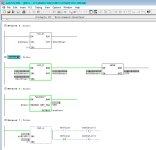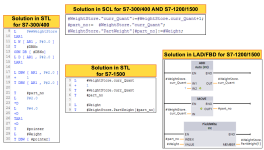Hello,
I'm working on my master thesis on university. Main goal of it is to compare PLC programming languages in Siemens (LAD, FBD, SCL, STL) under different conditions, like: program simplicity, speed, load of memory etc.
I wonder, are there any situations like: You can implement a solution to a problem in one language, but You cannot do it in another language?
Would be great if You would share with me some examples You know about
Thank You!
I'm working on my master thesis on university. Main goal of it is to compare PLC programming languages in Siemens (LAD, FBD, SCL, STL) under different conditions, like: program simplicity, speed, load of memory etc.
I wonder, are there any situations like: You can implement a solution to a problem in one language, but You cannot do it in another language?
Would be great if You would share with me some examples You know about
Thank You!









